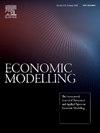解释交易量和股票收益之间的因果关系:是什么驱动了它的跨分位数模式?
IF 4.2
2区 经济学
Q1 ECONOMICS
引用次数: 0
摘要
本研究调查了交易量对未来股票回报的影响,解决了文献中的空白,即为什么这种因果关系以前被发现具有不同的迹象和大小。使用美国1973年10月至2018年12月期间的数据,我们采用分位数回归来实证检验交易量-收益因果关系是否由知情交易、投资者的流动性需求、情绪或不确定性驱动。我们的分析表明,情绪和知情交易的盛行,特别是好消息,显著地解释了观察到的跨分位数交易量-收益因果关系模式。这些发现为股票交易如何在非理性情绪和知情投资者的驱动下导致暂时失衡和未来价格逆转提供了新的见解,突出了投资者非理性、内幕交易以及流动性不足和不完美套利对资产价格行为的重要性。我们的研究结果为风险管理、收益和波动率预测、内幕交易监管和信息提供提供了启示。本文章由计算机程序翻译,如有差异,请以英文原文为准。
Explaining the causality between trading volume and stock returns: What drives its cross-quantile patterns?
This study investigates the impact of trading volume on future stock returns, addressing the gap in the literature as to why such causality has previously been found to be of varying signs and magnitudes. Using data from the US covering the period 10/1973-12/2018, we employ quantile regressions to empirically examine if the volume-return causality is driven by informed trading, investors’ liquidity needs, sentiment, or uncertainty. Our analysis reveals that sentiment and the prevalence of informed trading, especially on good news, significantly explain the observed cross-quantile volume-return causality pattern. These findings offer new insights into how stock trading, driven by irrational sentiment and following informed investors, causes temporary imbalances and future price reversals, highlighting the importance of investor irrationality, insider trading, but also illiquidity and imperfect arbitrage, for asset price behaviour. Our results provide implications for risk management, return and volatility forecasting, and regulation of insider trading and information provision.
求助全文
通过发布文献求助,成功后即可免费获取论文全文。
去求助
来源期刊

Economic Modelling
ECONOMICS-
CiteScore
8.00
自引率
10.60%
发文量
295
期刊介绍:
Economic Modelling fills a major gap in the economics literature, providing a single source of both theoretical and applied papers on economic modelling. The journal prime objective is to provide an international review of the state-of-the-art in economic modelling. Economic Modelling publishes the complete versions of many large-scale models of industrially advanced economies which have been developed for policy analysis. Examples are the Bank of England Model and the US Federal Reserve Board Model which had hitherto been unpublished. As individual models are revised and updated, the journal publishes subsequent papers dealing with these revisions, so keeping its readers as up to date as possible.
 求助内容:
求助内容: 应助结果提醒方式:
应助结果提醒方式:


